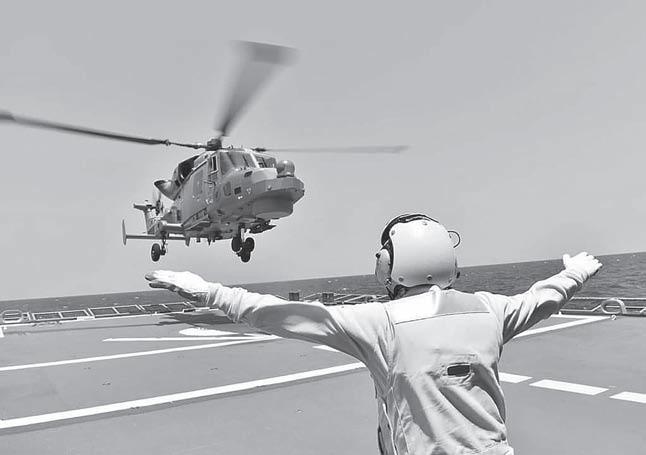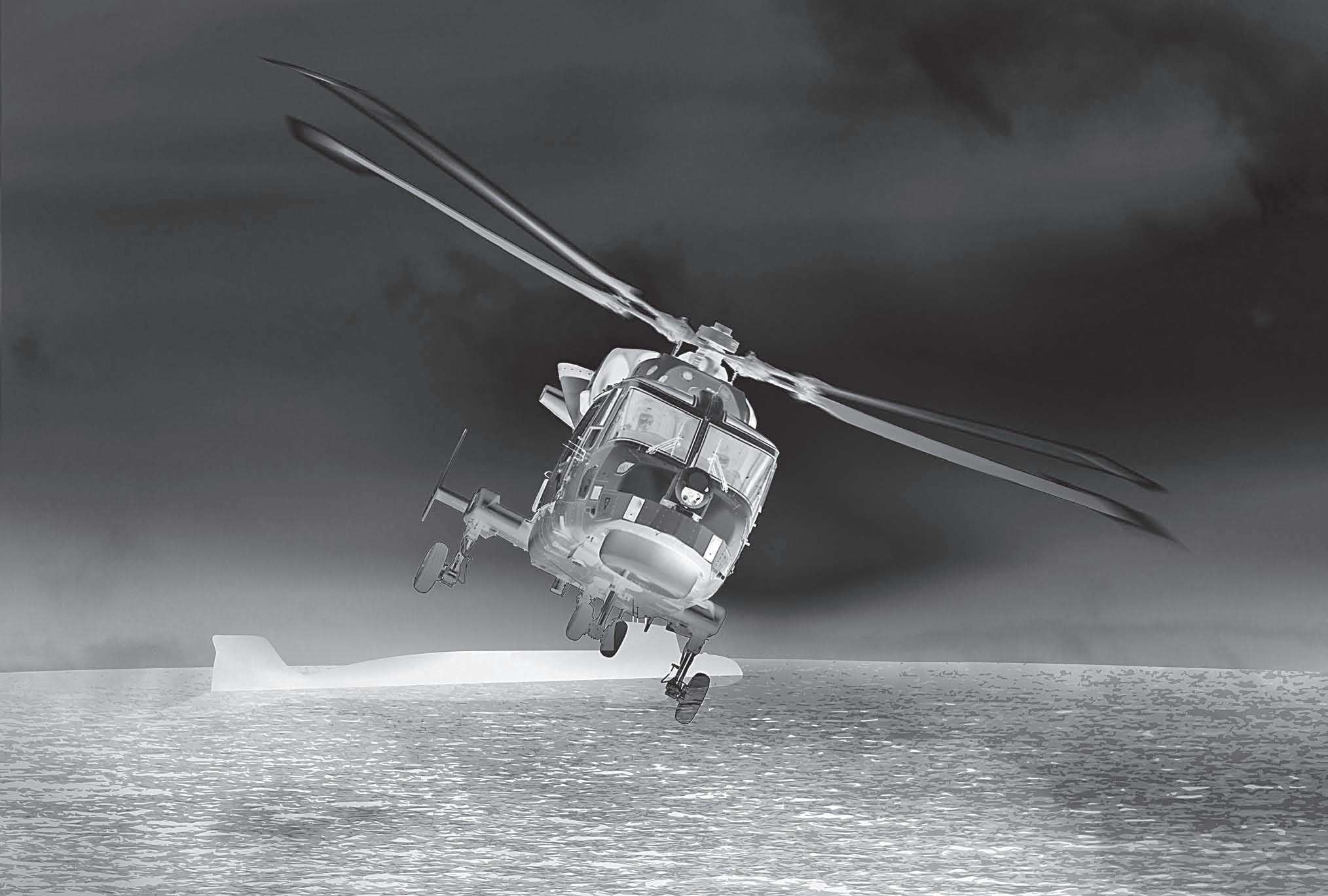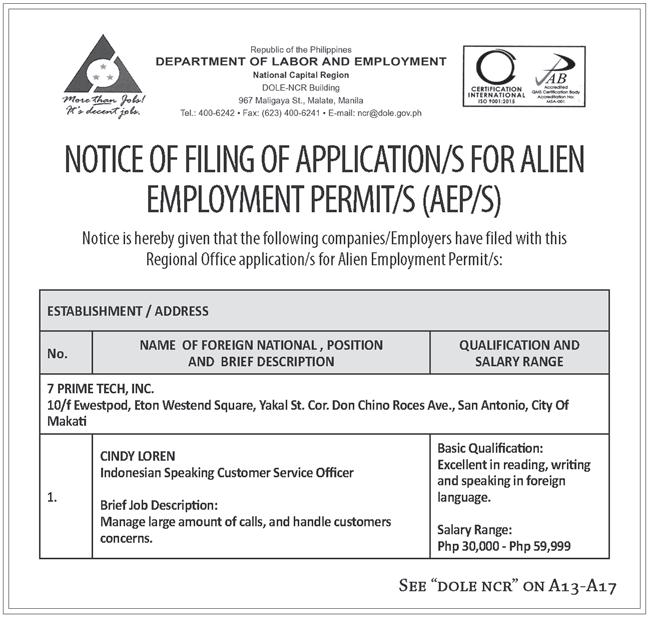
2 minute read
SUB ‘KILLERS’ UNLEASHED
By Rex Anthony Naval

Th is, after an AgustaWestland (now Leonardo) AW-159 “Wildcat” anti-submarine helicopter successfully landed on the flight deck of BRP Antonio Luna (FF-151) off Corregidor Island in late April.
On the morning of 27 April 2023, the PN achieved another significant milestone in its development of anti-submarine warfare capability as the PN AW-159 Mk220 ‘Wildcat’ helicopter, with tail number NH-441, successfully conducted its first deck landing aboard BRP Antonio Luna (FF151), an ASW (anti-submarine warfare) guided missile frigate, while underway at vicinity 30 nautical miles southwest of Corregidor Island,” the Philippine Navy posted on its Facebook page on May 4.
It noted that this achievement demonstrated the growing capability and readiness of the PN’s crews and platforms as a team for ASW operations.
“ Both the JRCFs (Jose Rizalclass frigates) and the PN Wildcats were products of the 1st Horizon Projects under the Revised AFP (Armed Forces of the Philippines) Modernization Program, which were delivered and commissioned into service in 2020/2021 and 2019, respectively. The JRCFs were built by Hyun - dai Heavy Industries of South Korea, while the PN Wildcats were built by Leonardo Helicopter Limited UK (LHUK),” the post further said.

Th e flight deck landings are part of the contracted in-country training with LHUK, which aims to see Wildcat pilots and aircrew proficient with their aircraft and its systems along with tactics for shipboard missions.
I ncluded in the training are the proper use or “dipping” of the AW-159s’ flash sonar and other sensors used for submarine detection.
D ipping of flash sonar signifies that the helicopter is attempting to detect a submerged submarine or is in search for a submarine contact.

“
The PN through the Naval Air Wing and Offshore Combat Force are taking steps to complete the integration of these game-changer assets in order to be deployed together in securing our maritime domain,” the post said.
It added these initiatives would contribute to fulfilling the PN’s vision of becoming a modern, multi-capable naval force responsive to our maritime nation’s defense and development.
The BRP Jose Rizal (FF-150), the Navy’s first guided missile frigate, and its sister ship BRP Antonio
Luna are modern warships capable of surface, subsurface, air and electronic warfare using state-of-theart electronic sensors, long-range missiles, acoustic-guided torpedoes and embarked anti-submarine helicopters.
Th e BRP Jose Rizal was delivered to the Philippines in May 2020 and commissioned in July that year, while the BRP Antonio Luna was commissioned on March 19, 2021.
Th e contract for the two ships was placed at P16 billion, with another P2 billion for weapons systems and munitions.

Also for AW-159 landings
MEANWHILE, BRP Jose Rizal is also qualified to land and receive on its flight deck the AW-159 helicopter, which is the ship’s partner in locating and hunting down hostile submarines.
Traversing the path of fleet interoperability, Team FF-150 held deck landing qualification (DLQ) together with the ASW
Wildcat helicopter AW-159 (NH441) last 09 August 2022,” the PN said on its Facebook page.
Th e DLQ is a part of a series of flight deck operations to further test and improve existing procedures, check connectivity, system integration, and leveling of officers, pilots, sailors and aircrew on flight operations.
B efore the actual deck landing, the ship’s crew and flight crew of the anti-submarine helicopter squadron had a series of lectures and workshops to ensure the preparedness and safety of personnel and flight deck equipment.
This activity marks the beginning of warfare interoperability operations between our air and surface assets, which complements the detection and engagement capability of both units,” it added.
Th e activity concluded safely with no casualties and any faults from both platforms.









